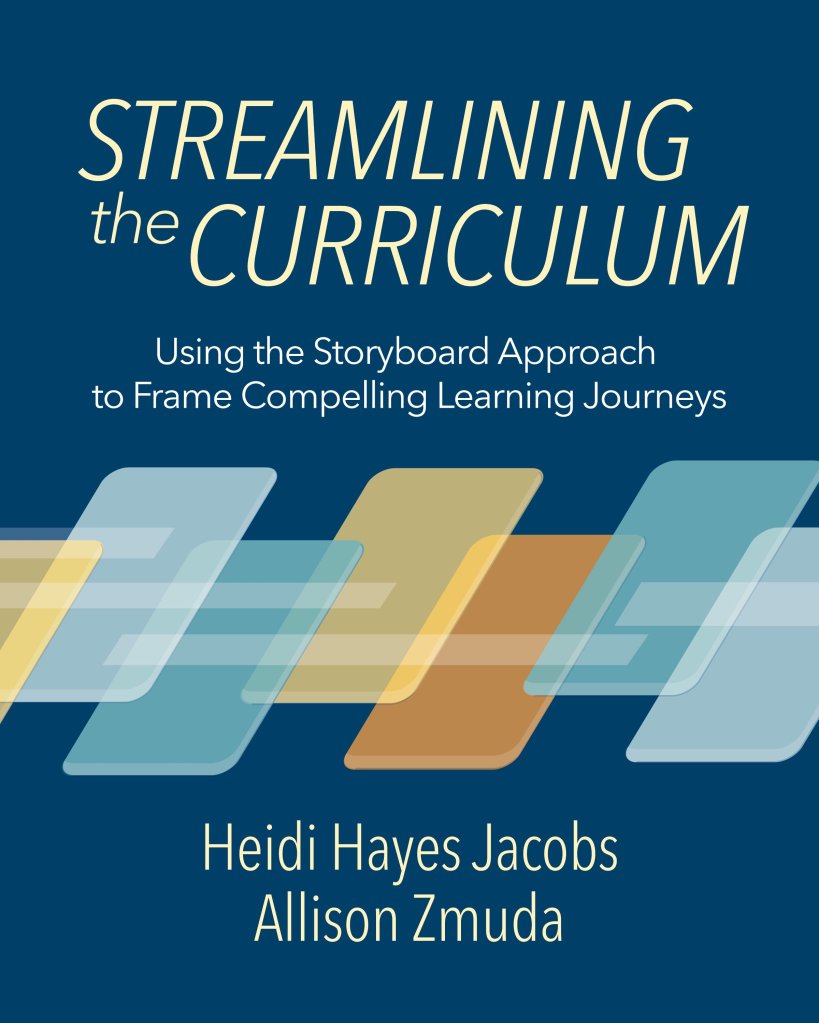
Thinking Like an Editor About Curriculum Design
Given that curriculum literally means “a path to run in small steps,” it’s important to engage learners in seeing the narrative arc in their learning experiences. For example, the “story” of math must address the following questions: How do all the concepts, standards, and proficiencies we are learning this year connect with one another?
How do they connect to the math concepts, standards, and proficiencies we learned last year, learned in the years prior, and will learn through senior year?
If these connections aren’t clear to the teacher, then finding them will be even more daunting for learners. Algebra students should be able to tell the “story” of how to imagine, model, and represent problems in different but equivalent ways; those who cannot provide that narrative flow will likely be adrift when encountering geometry.
AN EDITOR’S STANCE
Thinking Like an Editor About Curriculum Design As curriculum designers, teachers may play varied and interconnected roles—as researchers to explore and identify problems, challenges, and resources; as developers to identify or generate assignments; or as initial users to test out unit prototypes. But too often, the role of editor is relegated to more trivial matters, such as making sure all the boxes are filled in correctly.
According to one definition, “An editor’s role is the art, technique, and practice of assembling individual moments into a coherent sequence.” For example, “a film editor must creatively work with the layers of images, story, dialogue, music, and pacing, as well as the actors’ performances, to effectively’re-imagine’ and even rewrite the film to craft a cohesive whole.”
A fundamental part of the editor’s role is using a wide-angle lens to look for a narrative arc that reveals a storyline. When we tell stories, we make sense of our lives to communicate what we experience, see, and learn. Here, we show how to make that curriculum narrative possible by streamlining content, resources, and
Education Research You Can Use
HOW TO STREAMLINE
Making informed choices in this area requires an editorial eye both at the system and classroom levels.
- What to cut out. Teachers can make proactive and deliberate choices to remove whole topics, units, novels, or projects. Eliminate the unnecessary by considering what matters most for students when they encounter a curriculum. By reviewing the work at previous grade levels, teachers can better determine which material might be redundant.
- What to cut back on. Teachers can cut back on interesting but unnecessary tangents, topics that subsequent grade levels will more meaningfully address, and redundant resources and assignments.
- What to consolidate. Teachers can identify connections among units and then combine those units. The point is integration. As teachers consider the layout of the academic year, they can look for intersections where concepts overlap. Interdisciplinary possibilities often emerge when consolidating.
- What to create. Teachers can develop new topics to support the curriculum narrative. They can include diverse perspectives that honor the lived experiences of their communities. They can offer space for learners to more deeply investigate, create, and revise, as well as space for teachers to provide just-in-time teaching, regular feedback, and personalized tasks.
Although most teachers would agree that their current curriculum is overrun with too many activities, resources, and topics, “what to cut back” may cause them some concern. Who gives them “permission” to cut out or cut back material? How might that affect their colleagues, whether in their grade level, course, or vertically, in making sure students are prepared for more challenging topics?
SNIPPING AWAY AT THE STANDARDS
Cutting back or cutting out standards is an immediate concern, especially if you were to do it haphazardly or unintentionally. We suggest examining standard documents to identify core categories or bundles. When laying them out in what our colleague Marie Alcock calls a yearlong context, you can bundle the standards across the year as a narrative. They are the story of the year in standards that will naturally interface with the planned unit of study.

Here’s an example. As a 3rd grade teacher lays out her units of study in language arts across the academic year, she might start with a four-week unit on What Makes a Good Story, bundling targeted Common Core standards from RL (reading literature), W (writing standards related to responding to stories), and SL (speaking and listening that focus on narrative). That unit would be followed by a five-week unit on Investigating Topics, in which the teacher bundles standards from RI (reading informational text), standards in writing (W) focused on gathering and analyzing information, and corresponding SL (speaking and listening) standards.
Thinking Like an Editor About Curriculum Design Working with bundled standards saves teachers hours of planning and cross-checking long lists of categories. Thinking Like an Editor About Curriculum Design But what’s even more powerful is translating these bundles into student-facing learning targets—that is, into “I can” statements. Take a look at how the 3rd grade teacher might translate one of her reading standards into two accessible parts, both of which could be the basis for lessons and engagement assessments.
RL.3.3: Describe characters in a story (e.g., their traits, motivations, or feelings) and explain how their actions contribute to the sequence of events.
Learning Targets: “I can describe the traits of the characters” and “I can explain how the character affected what happened in the story.”
Thinking Like an Editor About Curriculum Design
Thinking Like an Editor About Curriculum Design If teachers received easy-to-use bundled standards that were converted into learning targets, they could get straight to the work of planning rather than spending hours translating the work into practice.
Unearthing possible storylines will clarify what is still vital in the curriculum and what is no longer necessary. But take note: cutting back or cutting out may also threaten learning designs that teachers have perfected over the years.
As we begin to take an editorial stance, it’s helpful to illustrate how other schools have done it.
EDITING THE CURRICULUM: A DISCIPLINE-BASED EXAMPLE
Cutting out, cutting back, and consolidating may feel impossible to do—especially if you start with the first unit in a course at the beginning of the year and attempt to make modest modifications throughout.Thinking Like an Editor About Curriculum Design The trick is to examine the standards to unearth concepts that are worthy of being the basis for a curriculum narrative. And it helps to be clear about what worthy means. You want to be able to answer “yes” to the following questions:
- Is the concept directly aligned with priority standards?
- Does it offer students authentic opportunities to do or experience something?
- Does it reveal the power of this discipline—for example, math (or poetry or music)—as a powerful and elegant language to describe the world?
- Does it connect to the broader aspirations we have for our students?
- Will the concept energize our students to immerse themselves more deeply in the course content?
Thinking Like an Editor About Curriculum Design As an example, 9th grade social studies teachers could step back and identify key learner roles they want to develop: modern-day historians, investigative researchers, and media makers. They could then identify a narrative approach that is a connective thread as they explore the world, rather than an eclectic and disconnected journey.
EDITING THE CURRICULUM: AN INTERDISCIPLINARY EXAMPLE
Under the auspices of a federal grant, identified schools each take on a theme to use as a “North Star.” Thinking Like an Editor About Curriculum Design The theme chosen was “Community Connectors: East Rock, New Haven, and the World.” In the units that resulted, students developed projects, connected directly with the community, and used their creativity.
From Streamlining the Curriculum: Using the Storyboard Approach to Frame Compelling Learning Journeys (pp. 38–42) by H. H. Jacobs and A. Zmuda, 2023, ASCD. Copyright 2023 by ASCD. Reprinted with permission.
